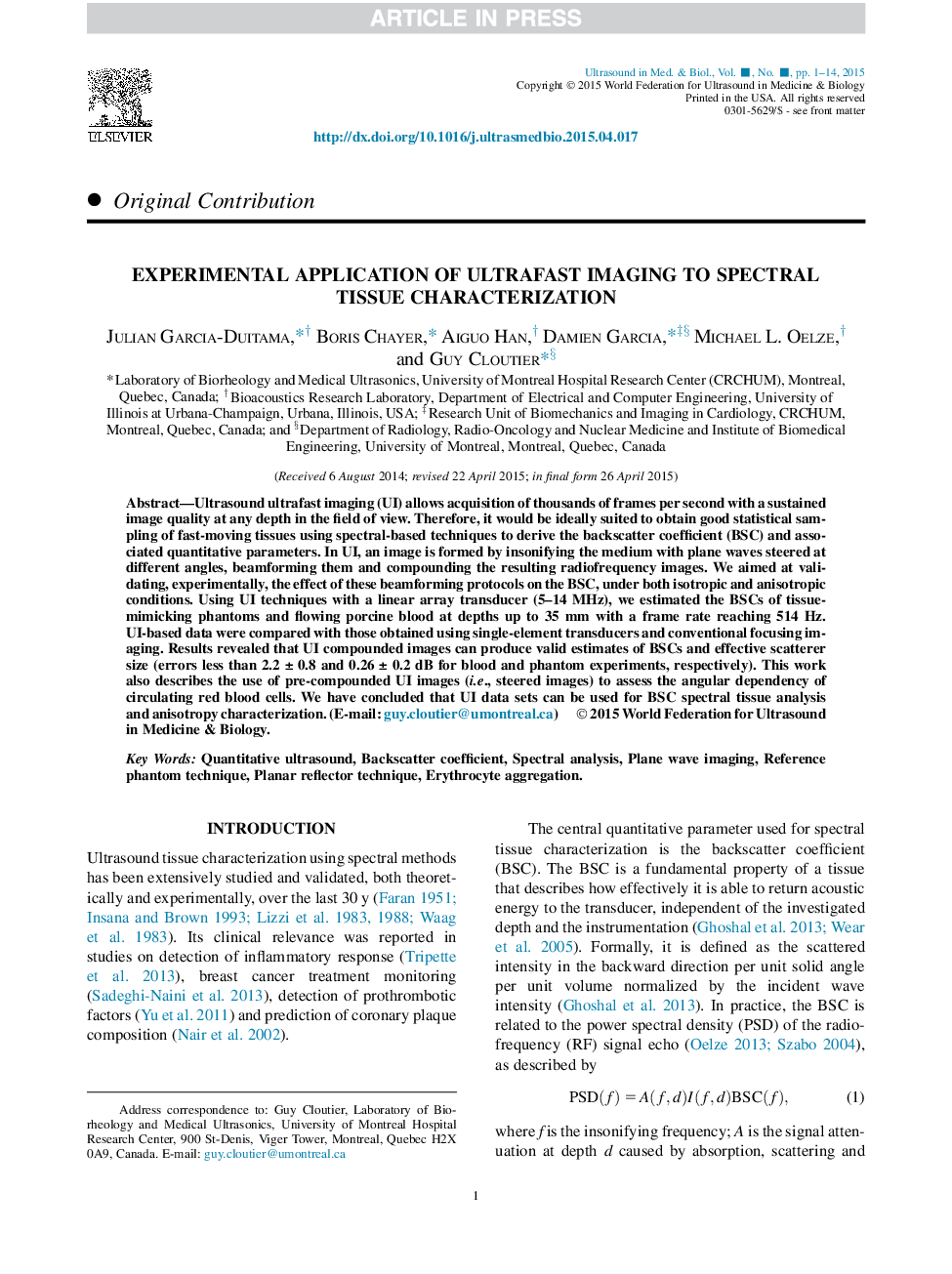| Article ID | Journal | Published Year | Pages | File Type |
|---|---|---|---|---|
| 1760291 | Ultrasound in Medicine & Biology | 2015 | 14 Pages |
Abstract
Ultrasound ultrafast imaging (UI) allows acquisition of thousands of frames per second with a sustained image quality at any depth in the field of view. Therefore, it would be ideally suited to obtain good statistical sampling of fast-moving tissues using spectral-based techniques to derive the backscatter coefficient (BSC) and associated quantitative parameters. In UI, an image is formed by insonifying the medium with plane waves steered at different angles, beamforming them and compounding the resulting radiofrequency images. We aimed at validating, experimentally, the effect of these beamforming protocols on the BSC, under both isotropic and anisotropic conditions. Using UI techniques with a linear array transducer (5-14 MHz), we estimated the BSCs of tissue-mimicking phantoms and flowing porcine blood at depths up to 35 mm with a frame rate reaching 514 Hz. UI-based data were compared with those obtained using single-element transducers and conventional focusing imaging. Results revealed that UI compounded images can produce valid estimates of BSCs and effective scatterer size (errors less than 2.2 ± 0.8 and 0.26 ± 0.2 dB for blood and phantom experiments, respectively). This work also describes the use of pre-compounded UI images (i.e., steered images) to assess the angular dependency of circulating red blood cells. We have concluded that UI data sets can be used for BSC spectral tissue analysis and anisotropy characterization.
Keywords
Related Topics
Physical Sciences and Engineering
Physics and Astronomy
Acoustics and Ultrasonics
Authors
Julian Garcia-Duitama, Boris Chayer, Aiguo Han, Damien Garcia, Michael L. Oelze, Guy Cloutier,
